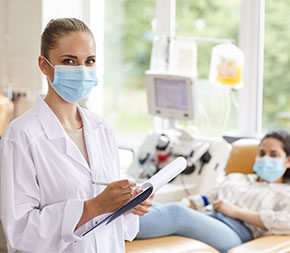9 Simple Techniques For Northeast Medical Institute - New Haven Campus Phlebotomy Course & Cna Class
Table of ContentsAn Unbiased View of Northeast Medical Institute - New Haven Campus Phlebotomy Course & Cna ClassHow Northeast Medical Institute - New Haven Campus Phlebotomy Course & Cna Class can Save You Time, Stress, and Money.Northeast Medical Institute - New Haven Campus Phlebotomy Course & Cna Class Things To Know Before You Get ThisThe Single Strategy To Use For Northeast Medical Institute - New Haven Campus Phlebotomy Course & Cna ClassNortheast Medical Institute - New Haven Campus Phlebotomy Course & Cna Class Things To Know Before You Get ThisThe Best Guide To Northeast Medical Institute - New Haven Campus Phlebotomy Course & Cna Class
The usage of such devices should be come with by other infection avoidance and control techniques, and training in their usage. Not all safety and security devices are applicable to phlebotomy. Before picking a safety-engineered device, individuals should completely explore readily available devices to identify their proper use, compatibility with existing phlebotomy techniques, and effectiveness in protecting team and individuals (12, 33).For setups with reduced resources, price is a driving variable in purchase of safety-engineered tools. Where safety-engineered devices are not offered, proficient usage of a needle and syringe is appropriate.
One of the crucial markers of quality of care in phlebotomy is the involvement and participation of the person; this is mutually beneficial to both the wellness employee and the client. Clear info either written or spoken must be readily available to each client who goes through phlebotomy. Annex F provides sample message for describing the blood-sampling procedure to a client. In the blood-sampling area for an outpatient department or center, offer a comfortable reclining couch with an arm rest.
The Only Guide to Northeast Medical Institute - New Haven Campus Phlebotomy Course & Cna Class
Ensure that the indicators for blood sampling are clearly specified, either in a written procedure or in documented directions (e.g. in a laboratory type). At all times, follow the approaches for infection prevention and control provided in Table 2.2. Infection avoidance and control methods. Accumulate all the equipment needed for the treatment and area it within safe and easy reach on a tray or cart, ensuring that all the things are clearly visible.
Where the patient is adult and mindful, comply with the steps described listed below. Introduce on your own to the individual, and ask the person to specify their full name. Examine that the laboratory type matches the client's identity (i.e. match the client's details with the lab type, to make sure exact recognition). Ask whether the license has allergic reactions, fears or has actually ever before passed out during previous shots or blood attracts.
Make the patient comfy in a supine setting (if possible). The patient has a right to refuse an examination at any type of time before the blood tasting, so it is vital to make certain that the individual has recognized the treatment - PCT Courses.
Northeast Medical Institute - New Haven Campus Phlebotomy Course & Cna Class for Beginners
Prolong the person's arm and examine the antecubital fossa or forearm. Find a blood vessel of a good size that is visible, straight and clear. The representation in Area 2.3, reveals common positions of the vessels, however lots of variants are feasible. The median cubital vein lies between muscles and is typically one of the most very easy to puncture.
DO NOT put the needle where blood vessels are diverting, since this raises the chance of a haematoma. Locating the capillary will help in determining the appropriate dimension of needle.
Specimens from main lines carry a threat of contamination or erroneous research laboratory test outcomes. It is acceptable, however not ideal, to attract blood samplings when first presenting an in-dwelling venous tool, before linking the cannula to the intravenous liquids.
Northeast Medical Institute - New Haven Campus Phlebotomy Course & Cna Class - Questions
Enable the area to dry. Failure to enable sufficient call time raises the threat of contamination. DO NOT touch the cleansed site; specifically, DO NOT position a finger over the capillary to assist the shaft of the subjected needle. It the website is touched, repeat the disinfection. Carry out venepuncture as complies with.
Ask the individual to develop a clenched fist so the veins are more prominent. Get in the blood vessel quickly at a 30 degree angle or much less, and remain to introduce the needle along the vein at the most convenient angle of entrance - CNA Courses. When sufficient blood has actually been gathered, release the tourniquet prior to withdrawing the needle
Facts About Northeast Medical Institute - New Haven Campus Phlebotomy Course & Cna Class Uncovered
Take out the needle gently and use mild pressure to the website with a clean gauze or dry cotton-wool sphere. Ask the patient to hold the gauze or cotton wool in area, with the arm extended and increased. Ask the patient NOT to bend the arm, due to the fact that doing so causes a haematoma.

Not known Details About Northeast Medical Institute - New Haven Campus Phlebotomy Course & Cna Class
Where possible, maintain the tubes in a shelf and move the rack in the direction of you - https://northeastmed.start.page. If the example tube does not have a rubber stopper, infuse very gradually into the tube as minimizing the stress and rate utilized to move the specimen lowers the danger of haemolysis.
